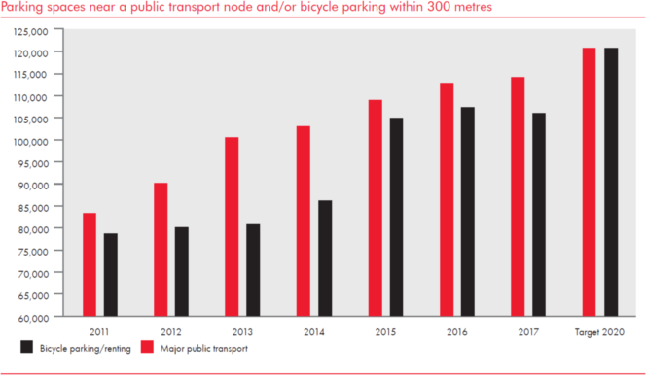Our 2017 CSR results on proximity to public transport
Parking spaces at mobility hubs up to 37%
Local authorities around Europe are constantly searching for ways to make their communities more liveable and sustainable. This is leading to a range of measures being introduced such as excluding cars from certain urban areas, taxing polluting cars more heavily, and redesigning city centres for pedestrians and cyclists. All this has an impact on mobility patterns.
Q-Park works closely with municipalities to analyse changing mobility patterns and to devise innovative responses so that regulated and paid parking become a smart and integral part of urban mobility.
By offering attractive parking facilities, we make urban amenities and vital functions (such as hospitals, airports, universities and city centres) accessible. By offering real-time information in navigation systems, we reduce traffic searching for a place to park.
We have a positive impact on the quality of life in large cities. After all, a city is more attractive with fewer cars on the streets. In partnership with urban planners we contribute by helping to:
Reduce traffic searching for a place to park, this saves time and has a positive impact on air quality.
Integrate on-street and off-street parking solutions with bicycle parking, this provides answers to health issues and favours active transport.
Create easy access to public transport with parking facilities close to alternative mobility options to reduce car usage.
In 2017, the percentage of our parking spaces near public transport rose to 37 percent, and those near bicycle parking has risen to 35 percent.
We are right on track to achieve our new and ambitious 2020 target of 40 percent.

